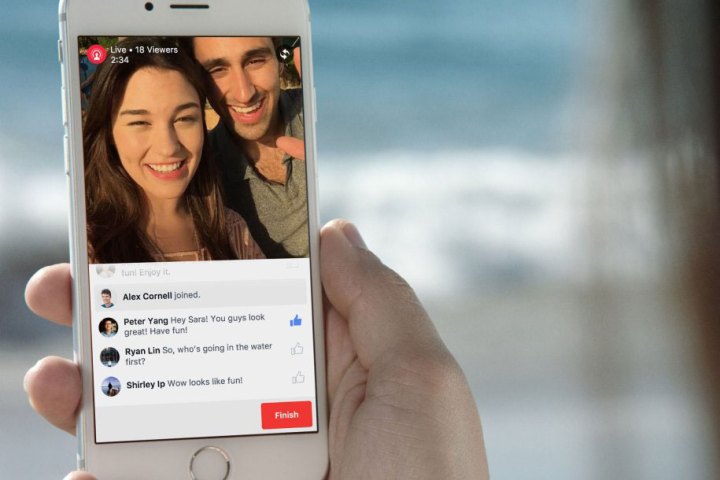
The Periscope-like service will allow “sports teams, media companies, brands, and other verified Pages [to] make announcements, share breaking news updates, take fans behind the scenes, host Q&As, and more,” the company said in a blog post.
After a live-stream video has gone out, the broadcaster can, if they wish, save the stream so users can view it multiple times, any time they like.
To receive live-stream alerts from brands, or from anyone using the real-time broadcasting feature for that matter, a user simply has to hit the Subscribe button (shown right) at the top of a live video.
Initially available for Facebook’s iOS app, the rollout is part of the company’s ongoing drive to make video a central part of its platform. Earlier this year Facebook added support for 360-degree videos for a more immersive viewing experience, and introduced a “floating video” feature that lets a video continue to play as a user scrolls through their feed.
In an effort to persuade partners to publish more video on its service, the Menlo Park company has also started sharing ad revenue with video creators, a strategic step that should help it to rake in even more revenue. And more recently it started testing a feed dedicated purely to video.
The king of social networks, which now has around 1.5 billion monthly active users, revealed recently that 65 percent of Facebook video views currently take place on mobile, with around four billion views taking place on the service every single day.
In September, Facebook executive Ted Zagat said the social network, co-founded by Mark Zuckerberg in 2004, will likely be “mostly video….a year or two from now.” The way things are going, Zagat’s prediction looks set to become a reality.
Editors' Recommendations
- How to go live on TikTok (and can you with under 1,000 followers?)
- Paramount+ adds Live Channels for ‘effortless’ entertainment
- Best apps for livestreaming: Stream, connect, and even make money
- Redbox launches a free, ad-supported live TV streaming service
- Sony’s PlayStation Vue live TV streaming service shuts down in January


